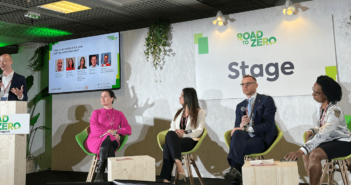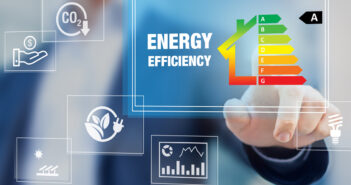Technology is a wonderful accelerator of innovation that has been transforming our world for centuries. The invention of steam engines, electrification, computers and electronics has revolutionised entire sectors. It has changed the ways we live, delivering mass production and new materials while driving radical efficiency, productivity gains and improvements in public health.
At Lendlease, we believe that places of the future won’t be judged by how technologically advanced they are, but by how well they adapt to the changes in interdependencies of the built world, by how well they learn, adapt and respond to the needs of the people and the natural environment. We have a vision for buildings to push the status quo and be autonomous.
We define Autonomous Buildings as buildings – noun and verb – which adapt to the interdependencies of the built world. Buildings that continuously learn, adapt and respond to the needs of people and the environment. Buildings that are able to auto-tune, adapting to dynamic indoor and outdoor conditions. Buildings that are flexible, that empower everyone to work effectively and collaboratively, that make people healthier. Buildings that provide access to insights and clarity never seen before, and generate a positive impact on the community and the environment.
We’ve learned people don’t want smart buildings. People want smart buildings’ outcomes. People want buildings and places that are a destination, that embody a sense of pride, that foster a vibrant community to organically grow and thrive. People want buildings that do no harm to the environment, provide optimal comfort and superior air quality and that enable them to be the best version of themselves, to be effective, curious and creative, to collaborate, feel good, follow their purpose and have an impact.
We believe that by combining digital technology, data, and advanced analytics with the unique experience and expertise of our teams, we have the opportunity to create new products and platforms that will drive the evolution of the property and construction industries and deliver on our commitment to creating and managing better places and place experiences for people – places and place experiences that are relevant today and far into the future.
No ‘top-down’ approach
Despite an acceleration of technology adoption, the property and construction industries are among the least digitised sectors in the world.
What’s the problem? The property and construction industries have typically been stubborn and slow to change. While some players in the market have been quick to adopt new technology innovations, there has been a lack of a top-down approach to digital transformation across the property lifecycle. Innovation instead has been left to siloed product developers, trying to solve for an entire industry of problems from their own limited point of view without support from across the entire value chain.
Inevitably, this has led to a smattering of smart products and solutions that fail to connect or address the problem holistically.
Yet, despite these challenges, there’s now an exciting opportunity – and a responsibility – for our industry to embrace digital transformation, align to evolving customer expectations and behaviours, and ultimately drive change.
A ‘clear and shared purpose’
So, what needs to happen? For true innovation to take place, the entire value chain needs to be considered and orchestrated, from investment through to the operation of an asset, creating a solution that suits the needs of each stakeholder along the way.
Technology adoption presents incredible opportunities for improving our world. However, without a clear and shared purpose, while technology can create applications such as smart meeting rooms, smart grids or even smart buildings, it doesn’t deliver the outcomes that matter the most.
Instead, a ‘clear and shared purpose’ needs to address four key aspects: sustainability (how to add to a better world); wellness (how to feed the body, mind and soul); productivity (how to make decisions based on data, information and insight); and human experience (how to make life easier).
Collaborative Approach
More broadly, the successful transition to autonomous buildings also requires action on a number of fronts including: collaboration; digital vision; digital infrastructure; integration; lifecycle data (product and asset data; performance data); buildings performance and optimisation; human experience; and ecosystem of partner applications.
From industrial, to smart, to autonomous, a new era is before us.
In the property and construction industries, autonomous will move from a collection of smart applications and systems to a truly connected ecosystem working together across the lifecycle to change the built world to be more sustainable, healthy, efficient and human.
For more details on the ‘creation of a better built world’ – and how you can play a role – download the whitepaper, A new category: Autonomous Buildings, or visit www.lendleasepodium.com.
Lendlease is global sponsor of the Leaders’ Perspectives Summit, March 16-18. More info here…



